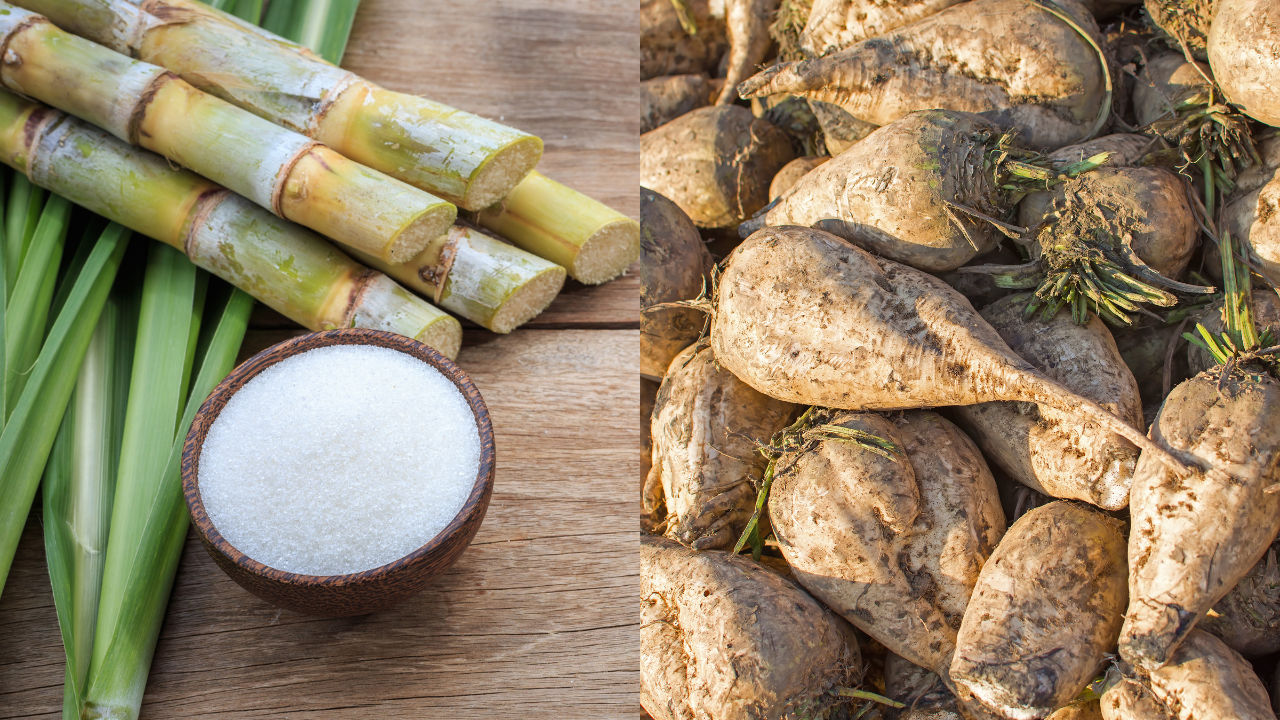Discover the Uses and Conveniences of Beet Sugar Vs Cane Sugar in Your Daily Diet
Exploring the distinctive top qualities of beet and cane sugar discloses even more than simply their sweetening capacities; it highlights their distinct effect on wellness and cooking arts. Beet sugar, understood for its refined taste, is usually preferred in fragile desserts, whereas cane sugar, with its tip of molasses, includes splendor to durable dishes. Each kind holds its very own dietary profile and glycemic ramifications, inviting a much deeper understanding of their roles in a balanced diet regimen and lasting usage practices.
Origin and Production Procedures of Beet and Cane Sugar

The distinctive climates and soil types required for growing sugar beets and sugarcane add to distinctions in their cultivation methods and geographic distribution, influencing the business economics and sustainability of their production. beet sugar vs cane sugar.
Nutritional Comparison Between Beet Sugar and Cane Sugar
Regardless of originating from different plants, beet sugar and cane sugar are nutritionally extremely similar, both primarily being composed of sucrose. Each supplies about 4 calories per gram, converting to roughly 16 calories per tsp. Structurally, both sugars are made up of approximately 99.95% sucrose, with minimal quantities of various other substances like wetness and trace element, which do not substantially alter their nutritional accounts.

Eventually, when choosing in between beet sugar and cane sugar based on nutritional material alone, both deal similar benefits and drawbacks as they are basically forms of the exact same particle-- sucrose, supplying fast power without other nutrients.
Impact on Wellness: Glycemic Index and Caloric Material
Discovering better into the impacts of beet sugar and cane sugar on health, it is necessary to consider their glycemic index and calorie web content. Both sugars are categorized as sucrose, which includes sugar and fructose. This structure leads them to have a similar effect on blood sugar level degrees. The glycemic index (GI) of both beet and cane sugar is around 65, categorizing them as high-GI foods, which can create quick spikes in blood sugar levels. This is an important aspect for individuals taking care of diabetes mellitus or those attempting to stabilize their power levels throughout the day.
Each kind of sugar consists of around browse this site 4 calories per gram, making their caloric web content equivalent. For those checking caloric intake, particularly when taking care of weight or metabolic wellness conditions, understanding this equivalence is essential (beet sugar vs cane sugar). Nevertheless, excessive intake of any high-calorie, high-GI food can add to health and wellness issues such as obesity, heart condition, and insulin resistance.
Environmental and Economic Factors To Consider of Sugar Production
Beyond wellness impacts, the production of beet and cane sugar dig this additionally raises considerable environmental and financial worries. Sugar beet growing often tends to call for cooler climates and has a reduced geographical footprint compared to sugar cane, which prospers in exotic regions. Nevertheless, both plants are intensive in terms of water usage and land profession, potentially bring about deforestation and water shortage. Financially, the worldwide sugar market is extremely volatile, influenced by adjustments in global trade plans and aids. Lots of nations incentivize sugar production via economic support, skewing market prices and impacting small farmers negatively.
In addition, the use of pesticides and plant foods in both beet and cane sugar growing can result in soil destruction and contamination, more influencing biodiversity and neighborhood water bodies (beet sugar vs cane sugar). The selection in between growing sugar beet or cane typically pivots on local ecological problems and financial variables, making the sustainability of sugar production an intricate issue
Culinary Applications and Flavor Distinctions
While the ecological and economic aspects of sugar production are without a doubt significant, the selection in between beet and cane sugar also influences cooking applications and flavor accounts. Beet sugar, derived from the sugar beet plant, is known for its extremely neutral taste. This makes it a functional component in cooking, where her response it does not change the taste of other elements. It dissolves promptly and is ideal for usage in cakes, cookies, and pastries.
Walking stick sugar, removed from sugarcane, usually maintains molasses traces, which impart an unique splendor and deepness. This minor molasses flavor boosts the intricacy of baked goods, sauces, and marinades. It is specifically favored in products where a sugar undertone is wanted, such as in brownies or gingerbread. Moreover, the mild variation in wetness web content in between beet and cane sugar can impact the appearance and uniformity of recipes, making cane sugar a favored selection for particular recipes that take advantage of its special homes.

Conclusion
In conclusion, both beet and cane sugar have distinct origins and manufacturing processes, providing similar nutritional accounts with small differences in sodium web content and flavor. While their effect on health and wellness, specifically regarding glycemic index and calories, is comparable, the selection in between them often comes down to environmental, financial aspects, and details culinary requirements. Understanding these facets can direct consumers in making informed decisions that align with their health and wellness goals and taste choices.